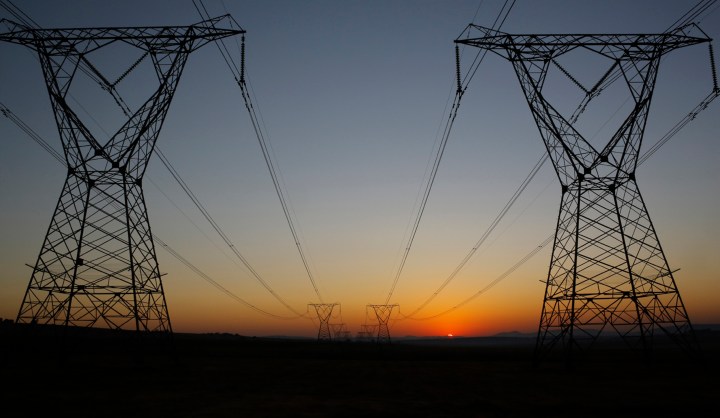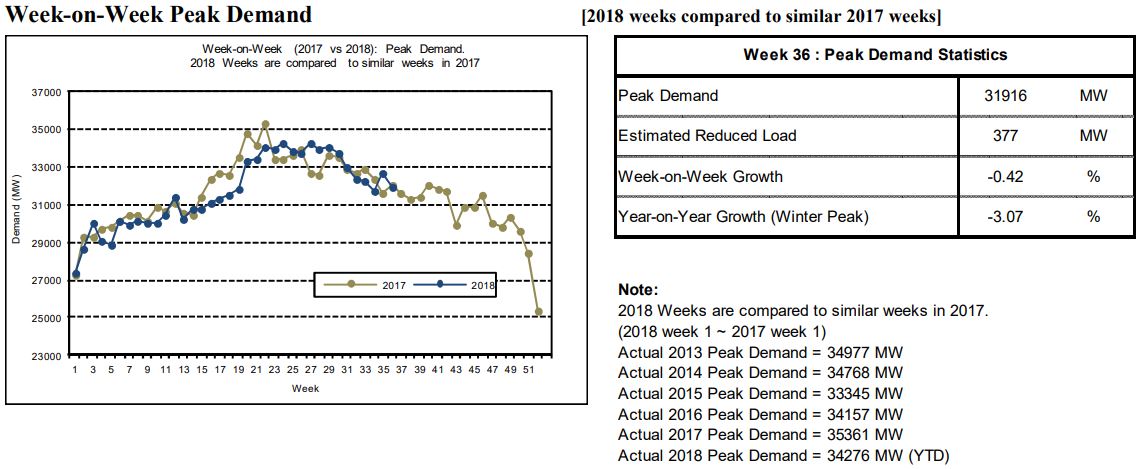OP-ED
Concerns mount over Eskom’s medium-term system adequacy outlook

Following the recent exposé by EE Publishers on the deepening coal supply crisis facing Eskom, alarm bells are also sounding about the utility’s worsening generation plant performance impacting on South Africa’s medium-term (five-year) system adequacy outlook.
See the earlier article here
There are deepening concerns about the overall state of Eskom’s ageing fleet of coal-fired power plants and the ability of Eskom to meet demand in the next five years. Already, Eskom is operating its emergency open-cycle gas turbines in the Western Cape almost daily to meet demand and avoid load shedding.
Compared with 2017, the energy availability factor (EAF) has significantly deteriorated from 78.61% in 2017 to 73.74% in the 2018 calendar year to date, and this is likely to drop still lower in the summer months of 2018.

Fig 1: Eskom week-on-week energy availability factor (EAF) for 2016, 2017 and 2018 to date
(Graph: EE Publishers; Data Source: Eskom)
Unplanned plant breakdowns, as measured by the unplanned capability loss factor, are significantly higher than expected, while planned maintenance outages remain high, as measured by the planned capability loss factor.
To a large extent this unhealthy situation has been mitigated by flat and declining electricity demand. Weekly demand, calculated from the aggregated hourly metered energy sent out (local generation plus imports), has been hovering around 30 GW for the last eight weeks. If electricity demand picks up, there are likely to be supply constraints.
The total energy sent out (GWh) in the 2018 calendar year to date, compared with the same period in 2017, is down by 0.37% to 4,318 GWh as at week 36, 2018, while the peak winter demand for the 2018 year was 34,276 MW — down 3.07% from the peak winter demand in 2017.

Fig. 2: Week-on-week peak demand for 2017 and 2018 to date (Source: Eskom)
Eskom’s plant performance for the next five years to from 2019 to 2023, as measured by the energy availability factor, is forecast to range between 72% (pessimistic) and 78% (optimistic), with a declining trend in the latter half of the five-year period. However the energy availability factor is now at the lower end of the forecast band at 73.74%.
Additional risk factors impacting on the ability of the electricity supply industry in South Africa to meet demand in the next five years include:
-
Looming coal shortages;
-
Duvha Unit 3 and Hendrina Unit 3 will in all likelihood not return to service;
-
Possible early removal of Unit 3 and Unit 8 at Eskom’s Komati power stations;
-
Planned decommissioning at Grootvlei, Hendrina and Komati power stations during the five-year period;
Possible early decommissioning of non-Eskom generators (such as Kelvin power station); and
-
The possibility of further delays in the commercial operation dates of generation units scheduled to come on stream at Medupi and Kusile.
The likely risk of significant supply shortages of 1,000-2,000 MW to meet demand and reserves in the next three months is now significantly worse than planned.
Colour key:
Green: Adequate generation to meet demand and reserves.
Yellow: < 1,000 MW possibly short to meet reserves
Orange: 1,001–2,000 MW definitively short to meet reserves and possibly demand
Red: > 2,001 MW short to meet demand and reserves

Fig. 3: Weekly forecast demand versus available generating capacity for the next three months (Source: Eskom)
Another issue Eskom still has to resolve is whether it will receive any further postponements of requirements for the utility’s coal-fired power stations to comply with the existing and new draft minimum air pollution emission legislation, regulations and standards beyond 2020. If not, this would add a new dimension to Eskom’s medium term operational, financial and environmental sustainability.
It is becoming clearer to Eskom that the reality of declining coal-fired generation plant performance and the identified risks require urgent short- and medium-term interventions and deployments of new capacity. The situation is so volatile now that even the latest assumptions of plant performance in the Draft IPR 2018 are proving unrealistic.
Interventions that should be considered may include:
-
Increased spending and efforts on effective deep maintenance;
-
Developing a culture of accountability at power stations for generation plant outages;
-
Accelerating deployment of new, utility-scale renewable energy capacity;
-
Adding utility-scale storage to the system to help the coal fleet with the morning and evening ramps in customer demand and to provide system reserves;
-
More aggressive promotion of energy efficiency and demand response for electricity customers;
-
Providing policy and regulatory certainty and encouraging the deployment of “behind the meter” small- and medium-scale embedded generation;
-
Removing bureaucratic burdens on the deployment of industrial cogeneration and IPP projects;
-
Operating the current coal fleet more flexibly to complement new variable renewable energy generation sources; and
Accelerating the construction of liquefied natural gas (LNG) unloading, storage and gasification plants, and gas-to-power generation in the form of gas engines and gas turbines.
In terms of the System Operation Code of the South African Grid Code, Eskom publishes a Medium Term System Adequacy Outlook report on or before 30 October of each year on the adequacy of the generation system to meet the requirements of electricity consumers for the next five years.
It is expected that Eskom’s 2018 outlook will paint a very different picture to that of 2017 on the state of the generation system adequacy for the next five-year reporting period from 2019 to 2023, which informed electricity policy makers, stakeholders and customers are awaiting with considerable concern. DM
Chris Yelland is investigative editor, EE Publishers.


















 Become an Insider
Become an Insider